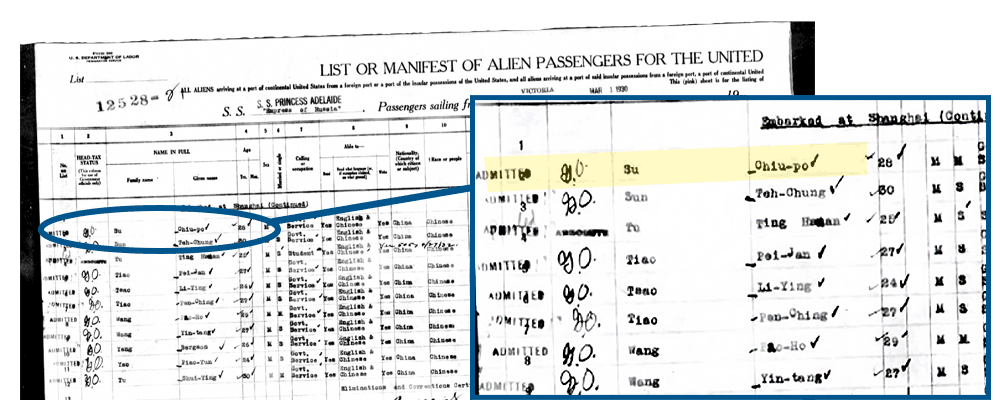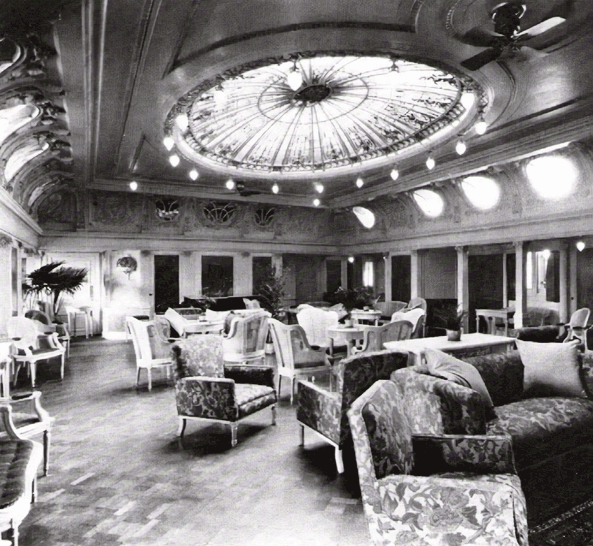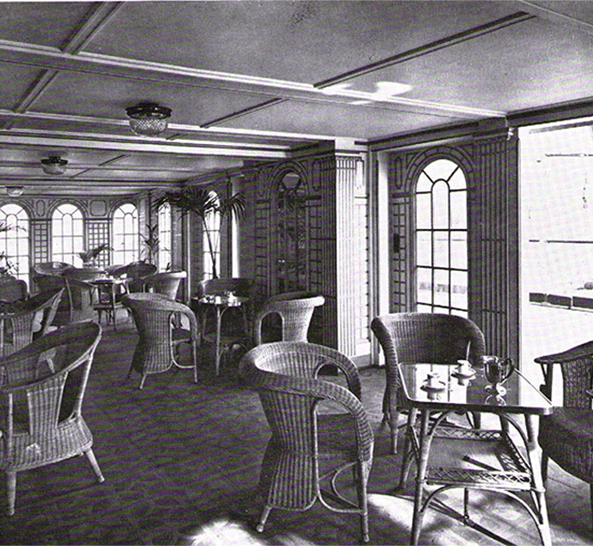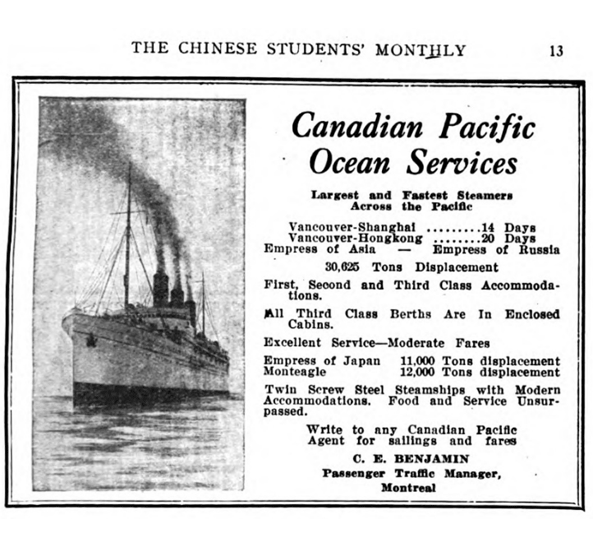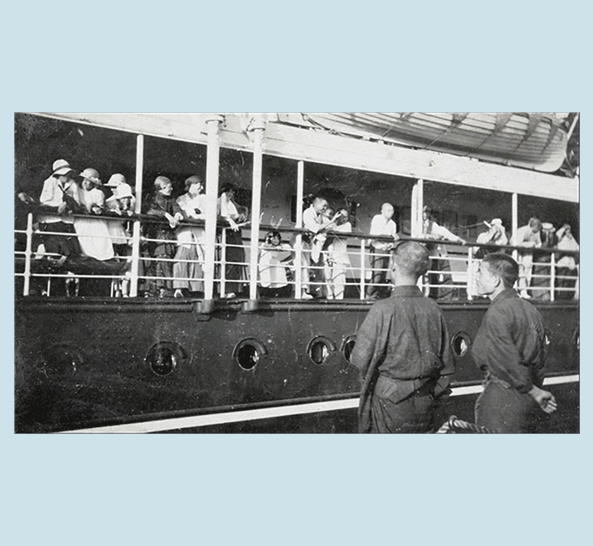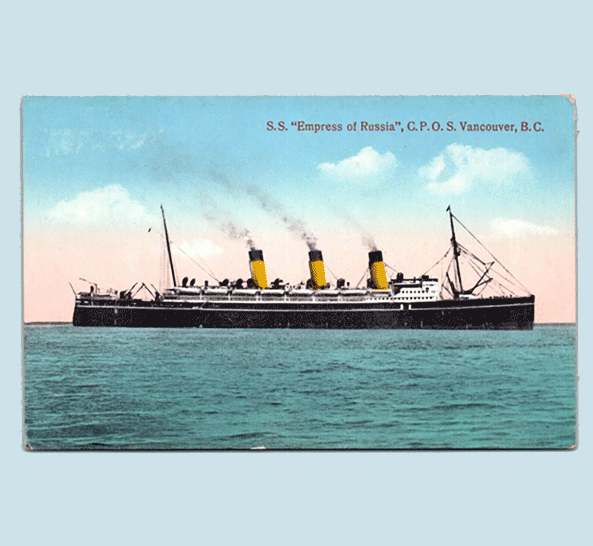IOWA LAW
First International Students
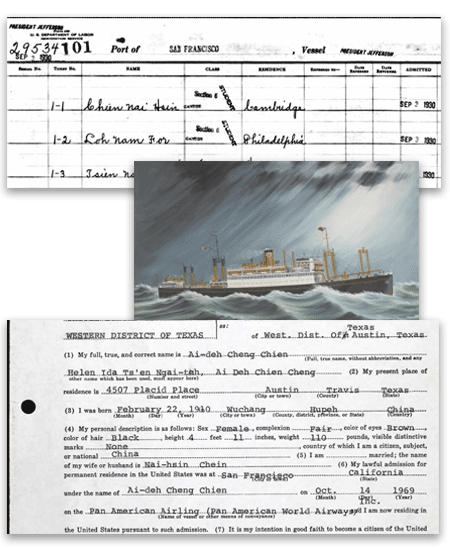
Chinese Immigration Restrictions
Nai Hsin Chien sailed on the President Jefferson from Hong Kong to San Francisco (Aug. 12 to Sept. 3) to attend Harvard Law School.
From 1882 to 1943, the U.S. Government strictly curtailed immigration from China to the U.S. The Chinese Exclusion Act (May 6, 1882 / 22 Stat. 58) was the first significant law restricting immigration into the U. S.
The “Section 6” exemption for students is stamped on Nai Hsin’s entry documents.
During World War II, China was a member of the Allied Nations and Congress repealed all the exclusion acts. However, the “national origin system” and quotas lasted until Congress passed the Immigration Act of 1965, which became effective in 1968. Nai Hsin and his wife moved to the U.S. in 1969, followed by his brothers Nai Wen and Nai Jen. (Nai Jen studied architecture at the University of Michigan.)
In 2011-2012, Congress condemned the Chinese Exclusion Act.
World War I Warships
During World War I, the Empress of Russia was used as a warship by the British Army. She was painted in “dazzle camouflage,” known in the U.S. as “razzle dazzle” painting. The paint was meant to make it difficult to estimate a target’s speed and heading. Its success was mixed.
Painter Pablo Picasso claimed the paint was invented by Cubists like himself.
Russian Constructivist art of the time also looked similar.
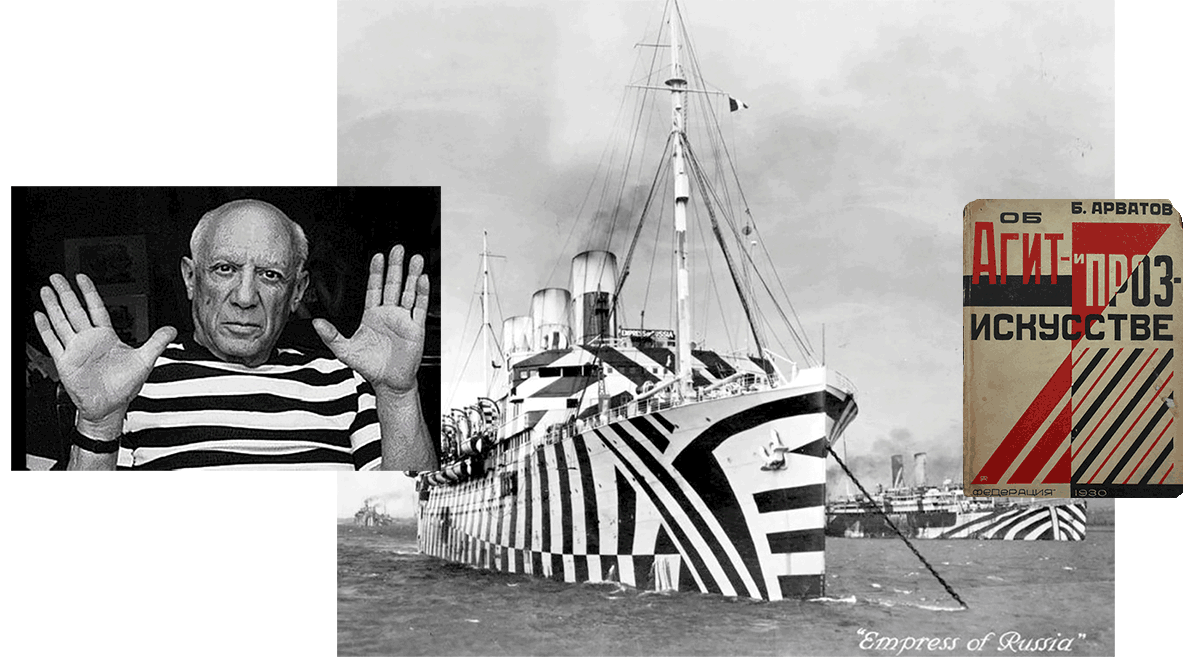
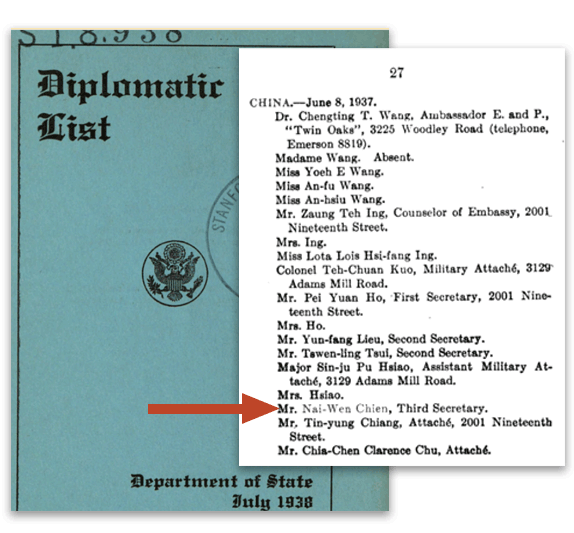
Diplomatic Service
Several members of the Chien family served as diplomats.
Shu Fan Chien, the father of Nai Wen and Nai Hsin Chien, received his law degree from the University of Chicago. He worked as a diplomat for a number of years.
Nai Wen Chien also worked as a diplomat and was listed in a late 1930s diplomatic directory.
